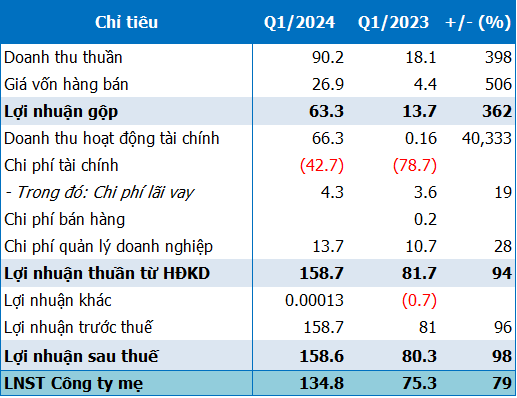
Workers tapping rubber at Loc Ninh Rubber Farm. (Photo: Hong Nhung/TTXVN)
|
Despite the prolonged tension in the Red Sea, rubber exports are still facing challenges in the international market, according to trade experts.
The demand from China continues to be the key factor affecting Vietnam’s rubber exports.
In addition, the prolonged tension in the Red Sea will also impact Vietnam’s rubber exports.
According to the General Department of Customs, the Import-Export Department (Ministry of Industry and Trade) stated that in January 2024, Vietnam’s rubber exports reached about 260,000 tons, worth 365 million USD, a decrease of 3.3% in quantity and 2.4% in value compared to December 2023.
Furthermore, compared to January 2023, rubber exports increased by 92.6% in quantity and 99.8% in value. The average export price of rubber was $1,404 per ton, an increase of 0.9% compared to December 2023 and 3.7% compared to January 2023.
According to the Import-Export Department, in 2023, Vietnam exported 2.14 million tons of rubber, valued at 2.89 billion USD, a decrease of 0.1% in quantity and 12.8% in value compared to 2022.
Among them, the main types of rubber exported are natural and synthetic rubber mixtures (HS 400280), latex, SVR 10, SVR 3L, SVR CV60, RSS3, SVR 20…
It is worth noting that natural and synthetic rubber mixtures (HS 400280) still account for the highest volume and value in Vietnam’s rubber exports, accounting for 67.57% in terms of quantity and 68.98% in terms of value, reaching over 1.44 million tons, with a value of 1.99 billion USD, an increase of 10.2% in quantity but a decrease of 1.8% in value compared to 2022.
Especially, exports to China accounted for 99.81% in terms of quantity and 99.67% in terms of value in the total natural and synthetic rubber mixtures of the country.
In 2023, many types of rubber exports decreased in both quantity and value compared to 2022. However, some types of rubber still showed good growth in quantity compared to 2022, notably SVR CV60, recycled rubber, RSS1, RSS4, SVR CV40, RSS5… These types of rubber, though, accounted for a small proportion in the total rubber exports of Vietnam.
In 2023, the average export prices of rubber types decreased significantly compared to 2022, with the highest decrease in mixed rubber (HS: 4005) at 22.8%; skim block at 22.4%; RSS3 at 17.6%; SVR 10 at 15.7%; SVR CV50 at 14.9%; latex at 14.8%; SVR 20 at 14.2%.
In the global market, in January 2024, rubber prices on key Asian exchanges tended to increase due to optimistic prospects in the automotive market and the economic stimulation measures of the Chinese government, as well as higher oil prices.
SAIC-GM-Wuling of China aims to sell 700 thousand new energy vehicles in 2024.
In the domestic market, in January 2024, the price of raw rubber across the country did not fluctuate much compared to the previous month.
At rubber companies, the purchase prices of raw rubber are currently maintained around 270-305 dong per kilogram, with Phu Rieng Rubber Company keeping the purchase price at 285-305 dong per kilogram, stable compared to the end of the previous month.
Binh Long Rubber Company maintains the purchase price at 285-295 dong per kilogram. Ba Ria Rubber Company maintains the purchase price at 283-293 dong per kilogram.
Mang Yang Rubber Company maintains the purchase price at 270-278 dong per kilogram, stable compared to the end of the previous month.
According to the Import-Export Department, in the coming time, the tension in the Red Sea is likely to cause fluctuations in forward and spot rubber prices.
Natural rubber prices usually adjust based on oil prices, and as oil prices are increasing, with many oil and gas tankers being re-routed to avoid the Red Sea, transportation costs and time have increased.
Furthermore, the rising oil prices have also caused the prices of synthetic rubber to increase, as crude oil is the raw material for synthetic rubber production. Natural rubber, which competes with synthetic rubber, also has positive prices.
Uyen Huong










































